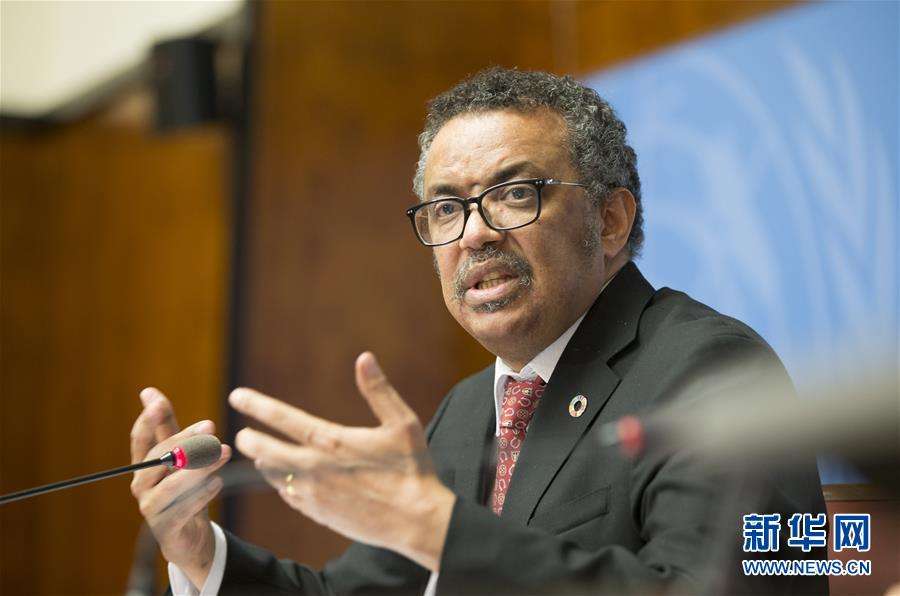(CGTN)16:55, July 01, 2020![]()

Dr. Tedros Adhanom Ghebreyesus,the World Health Organizations (WHO) Director-General(Xinhua/File Photo)
The World Health Organizations (WHO) Director-General, Dr. Tedros Adhanom Ghebreyesus warned on Monday that the COVID-19 pandemic is speeding up and the worst is yet to come.
Tedros also noted in his daily briefing that the lack of national unity and lack of global solidarity was actually helping the virus spread.
The WHO chief pointed out five priorities that every single country must focus on now to save lives. And the politicization of the pandemic is not one of them.
Some countries are now experiencing a resurgence of cases as they start to re-open their economies and societies. Most people remain susceptible. The virus still has a lot of room to move, he said. But the hard reality is: This is not even close to being over. Although many countries have made some progress, globally the pandemic is actually speeding up.
Please quarantine COVID politics, he said, adding that the virus has two dangerous combinations 鈥?one is its fast, its contagious and second is, its a killer. It can exploit divisions.
Your health is in your hands 鈥?That includes physical distancing, hand hygiene, covering coughs, staying home if you feel sick, wearing masks when appropriate, and only sharing information from reliable sources.
You may be in a low-risk category, but the choices you make could be the difference between life and death for someone else, he said.
Russian President Vladimir Putin also remarked that theres no reason to suspect that the coronavirus was introduced deliberately and that nothing good would come out of anyone insisting otherwise, during an interview with Rossiya 1 TV channel.
As the president explained, in their current predicament, countries should join forces instead of accusing one another.
We need to do everything that leads us to deliverance from this threat, Putin said, adding that thats where success awaits us rather than on the way of confrontation.
The second priority marked by Tedros is to improve surveillance to find cases, he added while repeatedly stressing on the importance of tracing and quarantining.
He added that if any country is saying contact tracing is difficult, it is a lame excuse.
The lame excuse is there are too many 鈥?Trust me there are not too many in war situations. If contact tracing helps you to win the fight, you do it even risking your life鈥?
The third priority should be to save lives. Early identification and clinical care saves lives. Providing oxygen and dexamethasone to people with severe and critical disease, saves lives, he said and advised countries to pay special attention to high-risk groups.
Fourth is to accelerate research, while fifth is political leadership.
He emphasized that global solidarity was crucial to the pandemic response and to implement a comprehensive strategy to suppress transmission.
Weve already learned a lot about this virus, but theres still a lot we dont know 鈥?and there are still tools we need, concluded the WHO chief.




